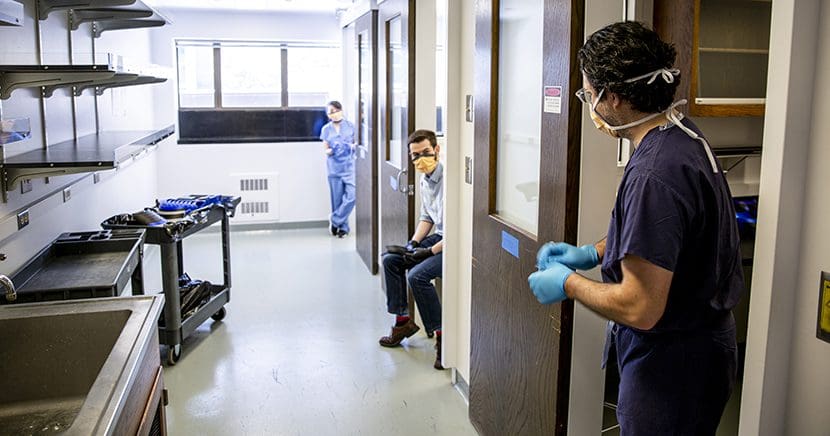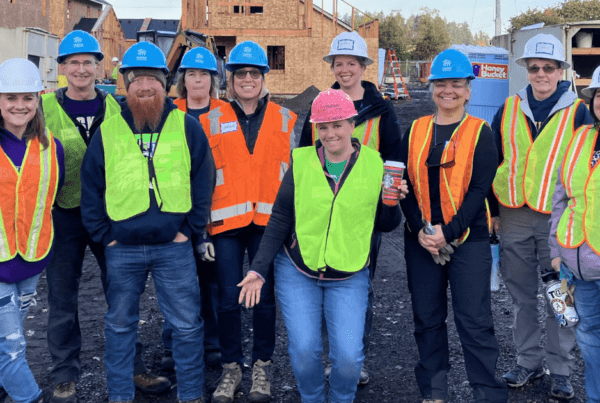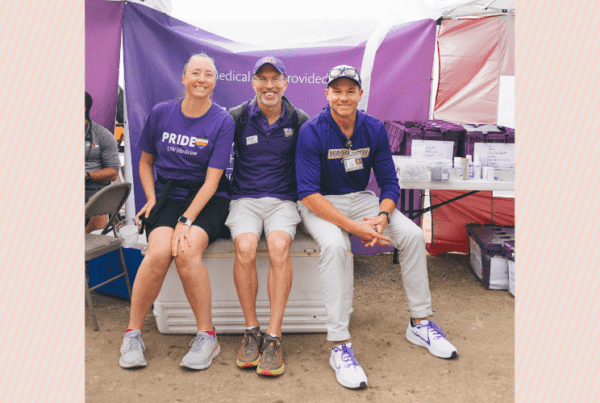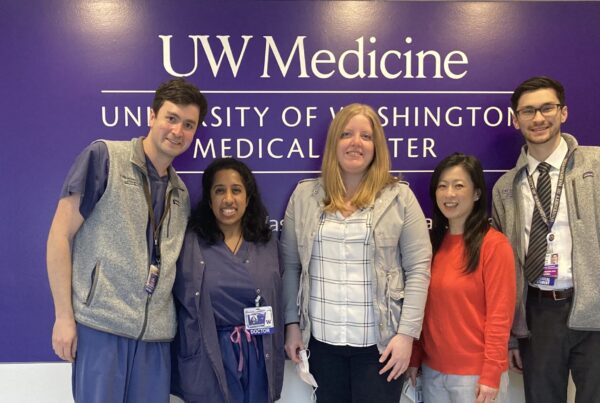What do you get when you take a research lab, a crowdsourced design and a whole lot of 3D printers? In the case of the current COVID-19 pandemic, you get essential face shields to protect front-line workers — and a stirring display of team spirit.
In early March, when the number of COVID-19 cases in the Seattle area began to rise, there was concern that there wasn’t enough personal protective equipment (PPE) to cover a ramped-up response effort. UW Medicine’s front-line workers needed masks, face shields, gloves and gowns in order to interact with patients at hospitals, clinics and drive-thru testing sites.
Enter the Center for Research in Education and Simulation Technologies (CREST), located at UW Medical Center – Montlake. The team at CREST normally creates surgical simulators for medical students and doctors to use when practicing new procedures, but when they heard about the concerns with PPE supplies, they didn’t hesitate to put their equipment and know-how to work.
“We’re in a unique position since we already prototype and manufacture parts in our lab, which is connected to a hospital in one of the cities that saw an early rise in confirmed cases,” says Jason Speich, CREST’s artificial tissue lab director. “Our ability to work collaboratively across the campus was an opportunity that quickly felt like a responsibility.”
With that responsibility in mind, CREST’s director Robert Sweet, MD, organized a cross-campus group of researchers from Computer Science, Mechanical Engineering, Global Innovation Exchange and others. The team included Dmitry Levin, associate director for the Center for Cardiovascular Innovation (CCVI) and a key driver in the project’s success; Beth Ripley, MD, director of the Veterans Health Administration 3D Printing Network; Speich and his CREST colleague DJ Traina, among others. Together, they tested and documented the feasibility, safety, comfort, fit and strength of publicly available PPE designs.
After quickly prototyping various parts, the group presented their findings to Sweet, who signed off on a design for a face shield visor from Redmond nonprofit Design That Matters. From there, stewarded by Ripley, the design was sent for approval via collaborative efforts between VA Puget Sound Health Care System, the National Institutes of Health and the Food and Drug Administration to use in the emergency response effort. Then the team was off to the printers.
CREST partnered with various UW Medicine and University of Washington sites — including CCVI, which usually focuses on patient-specific anatomical models for pre-procedural planning and device testing — to make use of more than 70 3D printers. In about seven hours, a single printer can simultaneously manufacture two face shields.
“This sounds painfully slow, but we have seen amazing support, and our partners are printing around the clock,” Speich notes.
Completed visors are then sent to CREST, where UW Medicine volunteers perform quality control and put the face shields together with elastic headbands and transparent face protectors. In about a day, the volunteers can assemble and package up to 200 completed face shields.

The Center for Cardiovascular Innovation’s Vivian Hou and CREST’s Jason Speich and DJ Traina clean and assemble face shield parts in isolated rooms. Credit: Dennis Wise
“We’re well on our way to producing 1,500 face shields, and the printed parts are reusable once they’re cleaned,” Speich says. “We estimate that care providers can get many uses out of a single face shield.”
While CREST continues to deliver face shields to the UW Medicine supply chain as well as Medic One paramedics and firefighters, the team is also turning its attention to other PPE ventures, like prototyping and testing disposable gowns.
“We get frequent updates on the needs of the hospital and community,” Speich says. “We’ve been filling gaps where we can and shifting our efforts once we hear that deliveries have been made from large PPE manufacturers.”
Now that’s team spirit.


